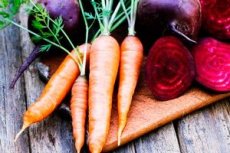
All iLive content is medically reviewed or fact checked to ensure as much factual accuracy as possible.
We have strict sourcing guidelines and only link to reputable media sites, academic research institutions and, whenever possible, medically peer reviewed studies. Note that the numbers in parentheses ([1], [2], etc.) are clickable links to these studies.
If you feel that any of our content is inaccurate, out-of-date, or otherwise questionable, please select it and press Ctrl + Enter.
Pegano diet for psoriasis
Medical expert of the article
Last reviewed: 04.07.2025

As is known, psoriasis is classified as an autoimmune disease that cannot be cured. However, a diet that follows the principles of the Pegano diet for psoriasis can help reduce the intensity of its symptoms - characteristic skin rashes.
 [ 1 ]
[ 1 ]
General information Pegano diets
To explain the essence of the diet, which was developed and successfully used by the American doctor John O. Pagano almost forty years ago, it is necessary to briefly highlight his point of view on the pathogenesis of this disease, which is still considered a “dermatological mystery”.
In his acclaimed book, Healing Psoriasis: The Natural Alternative, Pegano wrote that psoriasis is merely the outward manifestation of the body's attempts to rid itself of internal toxins, and he laid out his version of natural relief for patients.
According to Pegano, if you look at psoriasis "from the inside out", then this disease can be considered the result of an overload of the body's defense mechanism, which cannot cope with the removal of toxic waste products through the intestines, liver and kidneys. The accumulation of substances harmful to tissues and organs leads to increased intestinal permeability and the entry of toxins into the lymph and blood. And then, according to Pegano, our skin tries to remove toxins from the body. That is, the skin acts as a reserve excretion system, but since this is an impossible task for them, psoriasis becomes a reaction.
The goal that the Pegano diet for psoriasis should achieve is internal cleansing, release of endogenous toxins accumulated in the body (including the intestines), as well as restoration of the correct balance of alkaline and acid-forming products coming with food. Vegetables and fruits (alkalizing products) should account for two-thirds of the diet, and meat and cereals (acid-forming products) - one-third.
It is best to start the diet with a three-day cleanse, which consists of eating apples (for three days you need to eat only apples - without limiting the amount). You also need to drink a lot of water: 6-8 glasses a day. And then you need to switch to eating only permitted foods, and avoid what should be excluded from the diet.
What can and what can not?
So, what can you eat on the Pegano diet? You can eat unlimited amounts of alkaline foods, such as vegetables, leafy salads and greens, and various fruits. It is best to eat them raw or after minimal cooking.
It is allowed to eat lean lamb, chicken (white meat only) and turkey, sea fish, mushrooms, legumes, cereals (in moderation), buckwheat and brown rice, bread (whole grain, with bran, yeast-free), pasta made from durum wheat, citrus fruits.
You can and should drink fresh (that is, not pasteurized or sterilized) fruit juices, carrot juice and celery juice.
Vegetable oil (for dressing salads) can be any, but the best, of course, is olive oil. Nuts, seeds, and almonds can be eaten two or three times a week, 50-60 g.
Consumption is limited: dairy products (cottage cheese, cheese, butter, yogurt, etc.), eggs (no more than two boiled eggs per week), cereal porridge, drinks with caffeine.
By the way, the FDA's list of foods that help reduce psoriatic plaques includes salmon, broccoli, carrots, garlic, sweet potatoes, turmeric, chicory (leaves), turnips, and flaxseed oil.
The list of what you can't eat on the Pegano diet includes all types of red meat, offal, sausages, ham, boiled pork, lard, etc.; shellfish and crustaceans; fried and deep-fried foods; whole milk; white rice; potatoes, tomatoes (including tomato juice and ketchup), eggplants, peppers (all nightshade vegetables); white bread, buns, cookies, cakes, pastries, etc.; citrus fruits and strawberries; sugar, candy, chocolate, honey. And, of course, canned goods, fast food, dry breakfasts (snacks) and alcoholic beverages.

